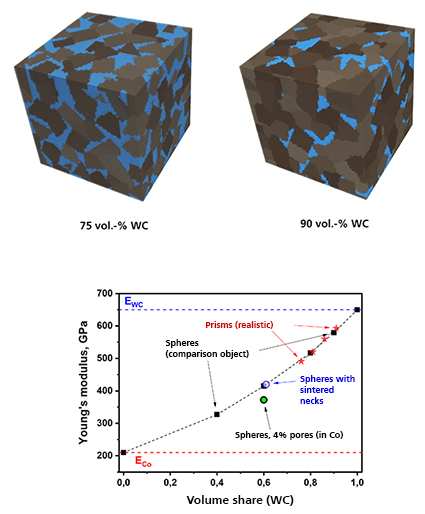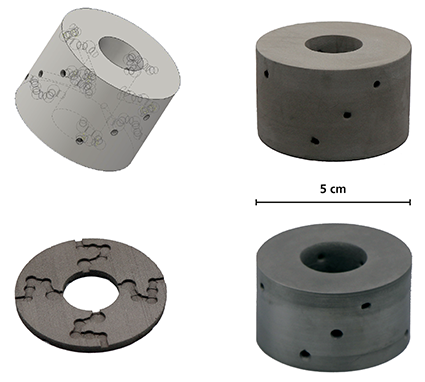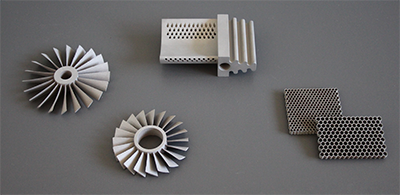Completed funded project
Motivation
Carbides have good wear resistance, compressive strength, fracture toughness and corrosion resistance, which qualifies them for use in the submarine industry, metal processing, automotive and chemical industries or in tool making. The most important hard metals consists of tungsten carbide (WC) with cobalt (Co) or nickel (Ni). The carbide provides hardness and wear resistance, while the metallic binder brings ductility and toughness to the composite. The properties of WC-based carbides can be adjusted over a wide range.
Objective

The target of the project was to develop a process for manufacturing components of complex geometries from hard metals using additive manufacturing. With the binder-jetting process, a cost-effective process suitable for small series was to be established. The challenge is that green parts produced with binder jetting have a very low green density. However, many industrial applications require dense components with a high tungsten carbide content > 85 wt.%. The densification should be achieved by a combination of liquid phase sintering or reactive melt infiltration. The Vickers hardness of the carbides produced in this way should be at least 1000 HV, the bending strength at least 1500 MPa.
Results

- Binder-jetted components made from free-flowing carbide powders and adaptedprinting parameters
- Optimised sintering and infiltration processes for 3D-printed hard metal bodies by in-situ investigations using the thermo-optical measuring device TOM_metal
- Design and production of a valve insert with optimised flow channels based on 3D printing for off-shore use
- Complex 3D-printed carbide components of the composition WC-Co 88-12, which could be densified by adapted of the sintering process
- Microstructure property simulations which show the influence of different WC grain shapes and the co-binder content on the mechanical properties of WC-Co carbides
Project Data
| Project Duration | 01.02.2016 - 31.12.2019 |
| Sponsor | Fraunhofer MaVo |
| Funding Amount | 750,000 Euro |
Project Partners
|
Fraunhofer HTL Fraunhofer IKTS Fraunhofer IPK Fraunhofer IWM |
| Project Coordination | Fraunhofer-Centre HTL |
| Project Management at the HTL |
Dr. Sarig Nachum / Dr. Holger Friedrich |

 Fraunhofer ISC, Center for High Temperature Materials and Design HTL, Bayreuth
Fraunhofer ISC, Center for High Temperature Materials and Design HTL, Bayreuth